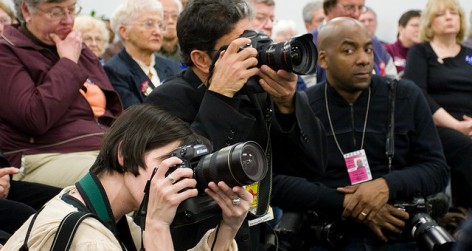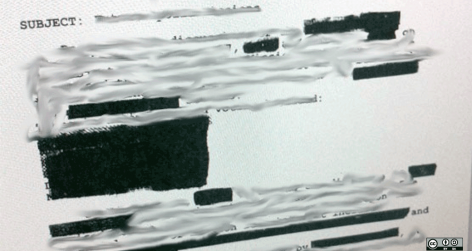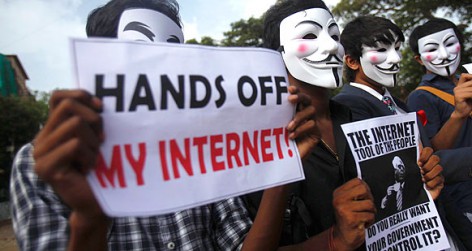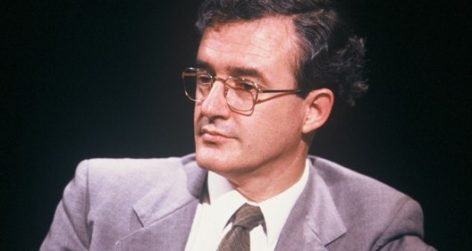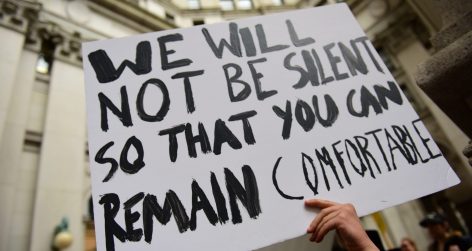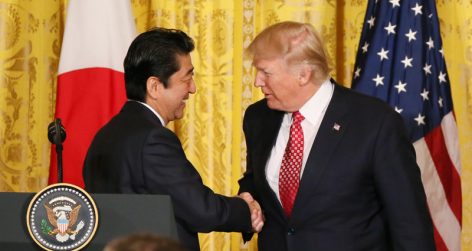Matthew Walton explores the deeper Buddhist context of right speech – and soul-searching on Buddhist internet message boards.

It is notable that “right speech” appears to be a positive category, describing the ways in which one ought to speak, yet it is defined negatively, as four types of speech to avoid. So, the Buddha enjoins us to avoid certain types of speech, but avoidance isn’t sufficient by itself, because we also need to cultivate wholesome speech. But if the classical guidance only tells us what to avoid, what can we say about the content of what “right speech” ought to be? Leslie Green has pointed us to other passages where the Buddha is more or less explicit about this content and I want to take the discussion a step further by asking: can we (and should we) separate the notion of “right speech” from its broader Buddhist moral context and still be left with a meaningful category? Green’s project is an attempt to remove it from that context, to secularize it, in a way. I want to suggest that there is additional value in examining it within that context, especially in understanding the impacts of wrong speech (and the concurrent benefits of right speech) and in revealing some of the limitations to “right speech” as the foundation of the kinds of speech norms that Les wants to develop.
To begin with, it is worth describing a bit more of this broader Buddhist moral context, what we might call a more holistic account, within which right speech is only one of several important practices. The Buddha taught his followers to cultivate the right orientation in eight different areas, called the Eightfold Noble Path. These areas are right view, right intention, right speech, right action, right livelihood, right effort, right mindfulness, and right concentration. The first two are commonly classified as the “wisdom” aspects, the next three as pertaining to “ethical conduct,” and the final three as reflecting the “concentration” aspects.
One important thing that needs to be made more explicit is—from the Buddhist perspective—the essential causal link between each of these aspects: between thoughts, words, actions, and effects. Taking this causal framework into account invites a more careful and more nuanced understanding of the potential effects of our speech. Green speaks about the effects on oneself and on others, the effects of both wrong and right speech. Buddhist doctrine gives us quite a bit of detail regarding these effects, including the physiological effects, the emotional effects, the ways in which speech and though condition subsequent thoughts and interactions beyond the initial speech act, the ways in which speech in today’s world moves far beyond its original context and then when it reaches others, their subsequent physiological and emotional reactions. And the chain goes on from there, as this would trigger further speech acts from them, expanding forever outward. If we are concerned with speech acts and considering the effects of speech, the broader Buddhist moral-causal context actually gives us much more to work with in this regard.
There is also something important to unpack with regard to the “right” of right speech. We can think of this “right” as constituting a set of moral norms but there is something further than that. Sila, the Pali word for the second category of the Eightfold Noble Path that contains right speech, is translated sometimes as “morality” and sometimes as “ethical conduct.” Buddhist commentaries connect sila not only to morality but to other related concepts of “harmony” and “coordination.” That would seem to accord with the third admonition related to right speech, not to be divisive in one’s speech. Importantly, for Buddhists these related concepts do not merely refer to harmony between people but to harmony within an individual, harmony between those areas that make up the eightfold path.
What this idea of harmony suggests is that right speech cannot stand on its own. It is both impoverished and incomplete when detached from its other referents within the noble path, practices such as right view and right understanding. And we cannot forget that, despite the urge to universalize these norms of right conduct, there is a particularly Buddhist sense of right view and right understanding. This includes a particular set of ontological and epistemological propositions related to what the conditions of existence really are and how we ought to know or understand them.
Now this may seem unrelated to Green’s argument, since the Buddhist view of reality and this deeper notion of what constitutes the “right” is not something that would be shared universally, possibly not even by many Buddhists! But I would argue that this broader moral context can still tell us something important about the notion of right speech and about speech norms derived from these principles. To do that, I would like to consider the ways in which some Buddhists have talked about the purposes of right speech.
A Zen Buddhist named Patricia Phelan has said that “right speech means using communication as a way to further our understanding of ourselves and others and as a way to develop insight.” So from this perspective, the ultimate purpose of right speech wouldn’t be the place where Green ends his analysis, considering how we could use legal or political institutions to guide actions such as speech. Instead, it is primarily seen as a practice oriented towards internal moral development and purification. The famous Buddhist scholar and translator Bhikkhu Bodhi explains that the sorts of public benefits of right speech, such as those that Les discusses, are actually secondary benefits; they are by-products of the primary focus, which is internal change.
This difference in focus is important. All of the practices on the Eightfold Noble Path seek to reduce atta, “ego” or “self-centered-ness.” If we only focus on the social benefits and if we detach right speech as a practice from its primary orientation towards the breaking down of the ego-centric self, we lose much of its moral foundation. If we re-insert the self into our evaluation, not only as a subject that produces speech acts but also as an object in the causal process that speech acts generate (remember the vast, interconnected web of effects with regard to physiological and emotional states), we get a better picture of the ways in which we might encourage right speech socially, but also a clearer view of the inherent limitations of this approach.
So Buddhists might argue that, while promoting right speech norms might seem like a good practice, it is ultimately less effective because it has not started early enough in the causal continuum. This is because speech acts originate in the mind, in thoughts. Distinguishing between wrong and right speech, and then cultivating the latter, first requires attention to right thought. This might also help us discern a deeper understanding of the category of idle speech, beyond the superficial. There is quite a lot of soul-searching—the less kind might call it navel-gazing—on Buddhist message boards in which posters try to reflect on their intentions in posting a comment and on the thought which informs their eventual, digital, speech act.
The fact that right speech is intended as part of a practice of moral purification, however, also draws our attention to its limitations, especially within a liberal legal context. Political life might require (or at least want to preserve) forms of speech that would clearly be in violation of either the letter or the spirit of these guidelines of speech that ought to be avoided. Angry or divisive speech would only lead to greater anger or further division; ridicule would be the germ of a cycle that might generate shame, anger, loneliness, or revenge. This kind of speech certainly does not pertain to the Buddhist goal of fostering a blameless daily practice of wholesome speech. Yet it might be a means to a greater end, such as separating a destructive military apparatus from an authoritarian party’s control or undermining a cruel dictator’s legitimacy among a portion of the population.
The norms that the Buddha generates to guide the practice of speech are appropriate for moral progress on a path that seeks to ultimately remove all preferences and lead to a completely detached existence within the world, unencumbered by the desires of the self or of any other obligations. They generate an appropriate attitude towards speaking when understood in the context of the other seven practices of the path. Yet it is this very moral orientation that reveals the limits of these speech norms as guides for speech in a broader social context. The demands of justice might require speech that is, from a Buddhist perspective, “wrong,” or at the very least, we might wish to develop speech norms that leave us free to employ this type of useful (yet unwholesome) speech, even though it would slow our progress on a longer moral path.
This challenge reflects conflicting demands that surface often within Buddhist philosophy: how do we balance the need for equanimity with regard to things in the world while keeping our hearts open to the suffering of others and developing the intensity that the fight for social justice requires?
Matthew J Walton is Aung San Suu Kyi Senior Research Fellow in Modern Burmese Studies, St Antony’s College, University of Oxford.






